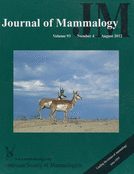Animals concentrate their activities within areas we call home ranges because information about places increases fitness. Most animals, and certainly all mammals, store information about places in cognitive maps—or neurally encoded representations of the geometric relations among places—and learn to associate objects or events with places on their map. I define the value of information as a time-dependent increment it adds to any appropriate currency of fitness for an informed versus an uninformed forager, and integrate it into simple conceptual models that help explain movements of animals that learn, forget, and use information. Unlike other space-use models, these recognize that movement decisions are based on an individual’s imperfect and ever-changing expectancies about the environment—rather than omniscience or ignorance. Using simple, deterministic models, I demonstrate how the use of such dynamic information explains why animals use home ranges, and can help explain diverse movement patterns, including systematic patrolling or ‘‘traplining,’’ shifting activity or focal areas, extra-home-range exploration, and seemingly random (although goal-directed and spatially contagious) movements. These models also provide insights about interindividual spacing patterns, from exclusive home ranges (whether defended as territories or not) to broadly overlapping or shared ranges. Incorporating this dynamic view of animal expectancies and information value into more-complex and realistic movement models, such as random-walk, Bayesian foraging, and multi-individual movement models, should facilitate a more comprehensive and empirical understanding of animal space-use phenomena. The fitness value of cognitive maps and the selective exploitation of spatial information support a general theory of animal space use, which explains why mammals have home ranges and how they use them.
Home ranges and the value of spatial information


